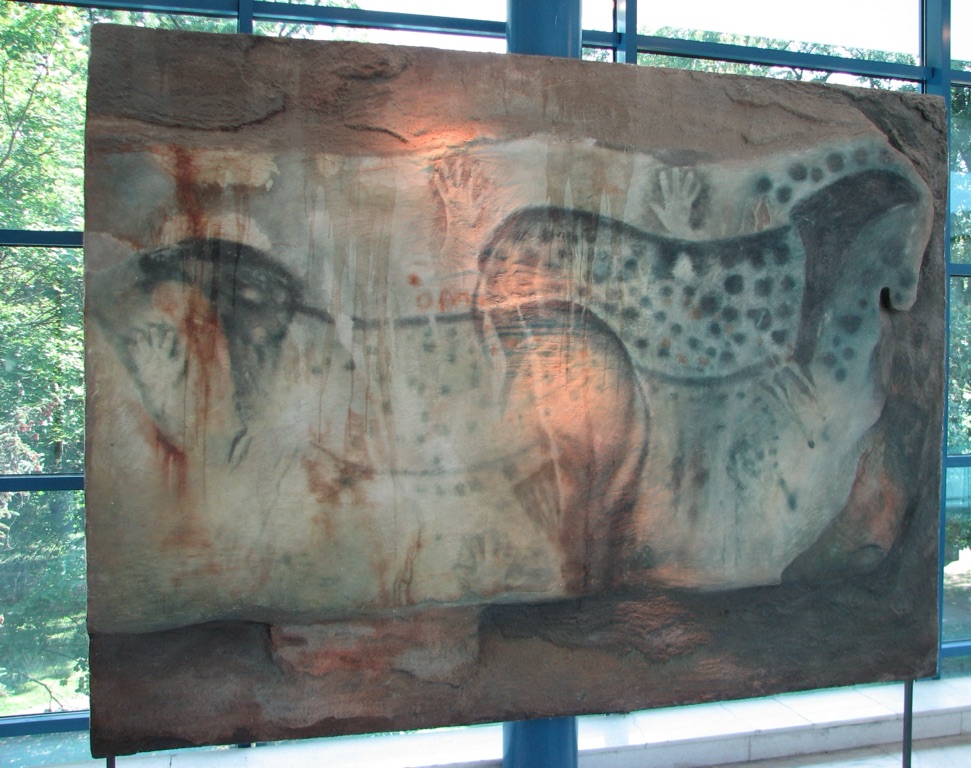The Grotte du Pech-Merle is a prehistoric cave located in the Lot department of France. It stands out as a significant archaeological site due to its remarkable cave paintings and geological formations. These artworks, some of which date back approximately 25,000 years, offer a window into the lives and artistic expressions of our Paleolithic ancestors. The cave is also known for its impressive stalactites and stalagmites, making it a natural wonder as well as a historical treasure.
Get your dose of History via Email
Historical Background of Grotte du Pech-Merle
The Grotte du Pech-Merle was discovered in 1922 by a pair of teenagers, André David and Henri Dutetre. They stumbled upon the cave while exploring the region. The cave’s paintings and engravings were created by prehistoric humans, with some dating back to the Gravettian period. Over time, the cave has seen various inhabitants, including possibly Neanderthals and certainly early modern humans.
The creators of the cave art remain anonymous, but they were likely Cro-Magnon, the first early modern humans. These artists used the cave walls as their canvas, leaving behind a legacy that has endured for millennia. The cave has not been the scene of any known historically significant events in recent times. However, its discovery has greatly contributed to our understanding of prehistoric art and culture.
Since its discovery, the Grotte du Pech-Merle has been the subject of extensive study and preservation efforts. It was opened to the public in 1926, allowing visitors to marvel at the prehistoric artwork firsthand. The cave has been carefully managed to ensure that the paintings and geological formations are protected from damage.
The cave’s historical importance is underscored by the insights it provides into the artistic practices and spiritual beliefs of Paleolithic humans. The images depict animals, human figures, and abstract signs that may have held significant meaning for their creators. The cave serves as a testament to the complexity and depth of prehistoric human thought.
While the Grotte du Pech-Merle is not a site of historical events in the conventional sense, its value lies in its status as a cultural artifact. It offers a direct connection to our distant ancestors and their way of life. The cave remains a focal point for archaeological and paleontological research, contributing to our understanding of human history.
About Grotte du Pech-Merle
The Grotte du Pech-Merle spans over two kilometers, with numerous chambers and galleries showcasing prehistoric art. The cave paintings include images of horses, mammoths, bison, and human figures, executed in black and red pigments. These pigments were derived from minerals like manganese oxide and iron oxide, mixed with animal fat or plant sap to adhere to the cave walls.
The cave’s geological formations, such as stalactites and stalagmites, add to its splendor. These features formed over thousands of years as water dripped from the cave ceiling, depositing minerals that built up into the striking structures seen today. The cave also contains calcite pearls and flowstones, adding to its natural beauty.
The construction of the cave is a natural process, not a human-made endeavor. The cave’s chambers were formed by the erosive action of water over limestone, creating the vast spaces that prehistoric humans later adorned with their art. The cave’s layout includes large caverns, narrow passageways, and deep pits, offering a variety of surfaces for artistic expression.
Architectural highlights of the cave include the Pech-Merle’s “Great Ceiling,” a large expanse adorned with paintings that provide a panoramic view of Paleolithic art. The cave also features the “Panel of the Spotted Horses,” where horses painted with spots are accompanied by handprints, suggesting a form of human interaction with the art.
The preservation of the Grotte du Pech-Merle is a priority, with controlled access to ensure the cave environment remains stable. The cave’s interior is carefully monitored to prevent the growth of algae and fungi that could damage the ancient artworks. The cave’s historical and natural elements combine to make it a unique and invaluable site.
Theories and Interpretations
The purpose of the cave paintings in Grotte du Pech-Merle has been the subject of much speculation. Some theories suggest that the cave served as a sanctuary for religious or shamanistic rituals. The presence of handprints and abstract symbols alongside animal depictions may indicate a spiritual or ceremonial use.
The mystery of the spotted horses has intrigued researchers. Some believe that the spots represent a now-extinct horse breed, while others think they may have symbolic significance. The handprints found near these images could signify human interaction with the spirit world or a form of early signature.
Interpretations of the cave’s art must be matched to historical records with caution. There is no written documentation from the time of the cave’s use, so interpretations are based on comparisons with other prehistoric sites and artifacts. The cave’s art is a puzzle that archaeologists and historians continue to piece together.
Dating the cave paintings has been carried out using various methods, including radiocarbon dating and analysis of pigment layers. These studies have helped establish a timeline for the creation of the artworks, placing some of the paintings in the Gravettian period, around 25,000 years ago.
Despite the extensive research, many aspects of the Grotte du Pech-Merle remain shrouded in mystery. The cave continues to be a source of fascination and study, as each theory and interpretation adds to our understanding of prehistoric human culture.
At a glance
Country: France
Civilization: Paleolithic, likely Cro-Magnon creators
Age: Approximately 25,000 years (Gravettian period)
Conclusion and Sources
The Grotte du Pech-Merle is a testament to the ingenuity and creativity of our Paleolithic ancestors. Its discovery and subsequent studies have enriched our knowledge of prehistoric art and culture. The cave’s preservation allows us to connect with a distant past and appreciate the artistic legacy left behind by early humans.
Reputable sources used in creating this article include:
– Wikipedia’s entry on Grotte du Pech-Merle: https://en.wikipedia.org/wiki/Pech_Merle
– The official website of the Grotte du Pech-Merle: http://www.pechmerle.com/

